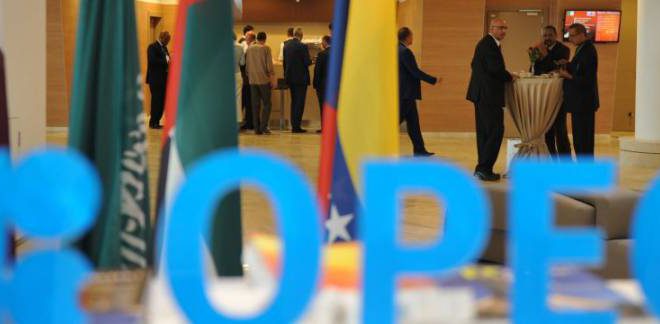The global energy industry has its eyes set on the next month’s crucial meeting between Opec and oil producers outside the organisation. as a global pact to cut production is very much on the cards. The Organisation of the Petroleum Exporting Countries (Opec). Russia and other producers agreed to cut production by 1.8mn barrels per day (bpd) for six months from January 1 this year to support the market. However. an Opec and non-Opec technical committee is believed to have recommended that producers extend a global deal to cut oil supplies for six months from its June expiry. Russian Energy Minister Alexander Novak said recently that a decision on extending the pact had not yet been taken. but would be discussed with Opec on May 24. Opec ministers besides their non-Opec counterparts are scheduled to meet on May 25. Opec production cuts in the first half of 2017 were aimed at reducing the global glut of crude oil and have led to a modest market recovery so far this year. With the next Opec policy meeting a little more than a month away. individual countries seem weighing their options with regard to extending production cuts. Some experts have argued the extension of production cuts is critical for the market to remain stable. Without the cuts. they say oil could slide to $30-40 a barrel. A report from Citigroup said that Opec’s output cuts can offset the US production response and Goldman Sachs Group said the market needs to be more patient. In a recent report. Goldman Sachs reiterated its confidence in the oil market and said that US inventory was in line with expectations. Meanwhile. the International Monetary Fund (IMF) has cautioned that the economic growth in Saudi Arabia and most other Arab oil exporters will slow this year following production cuts aimed at propping up energy prices. In its latest World Economic Outlook report. the Washington-based global monetary body cut its 2017 growth forecast for the region comprising the Middle East. North Africa. Afghanistan and Pakistan to 2.6%. down from the 3.1% projected in January. “The subdued pace of expansion reflects lower headline growth in the region’s oil exporters. driven by the November 2016 Opec agreement to cut oil production.” the IMF said. Growth in Saudi Arabia. the region’s largest economy. is expected to slow to 0.4% this year because of lower oil production and ongoing fiscal consolidation. before picking up to 1.3% in 2018. Economists say growth is likely to dip in most Gulf Co-operation Council member states. which also include Bahrain. Kuwait. Oman. Qatar and the UAE. But one bright spot seen by many economists is gas-rich Qatar. which is expected to register 3.4% growth this year. compared with 2.7% in 2016. Obviously. for Qatar. the country’s huge financial reserves and still-strong revenues from its gas sector will ensure continued public sector spending ahead of the FIFA 2022 World Cup. This will keep the country’s growth trajectory relatively high in the region.

 Iran Energy News Oil, Gas, Petrochemical and Energy Field Specialized Channel
Iran Energy News Oil, Gas, Petrochemical and Energy Field Specialized Channel



